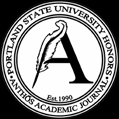Abstract
This paper examines and compares two American animated productions targeting elementary and middle school children, and in doing so aims to elucidate the handling of gender in similar television programs and feature films of the past three decades. These animated works are treated here as a Foucauldian apparatus, one predicated on the force of systematically structured observation, which functions to manipulate power relations in the favor of hetero- and cis-male order. The Disney feature Beauty and the Beast supplies a case for investigating the heterosexist discourses of these contemporary animated media. However, as will be shown, comparatively feminist animated works have proven equally deft in their subversion of patriarchal patterns; for an example of such indirect but radical rereading and rewriting of gender codes we will turn to the television cartoon program Adventure Time.
I will advance the argument that American animated children’s media is a crucial force in children’s acquisition of a symbolic vocabulary of gender—linguistic and otherwise—and the associated application of these symbols in the act of gendered observation of their environment and themselves. This is due not only to these media constituting a significant portion of children’s lived experience, but also children’s (rightful) understanding of these story-worlds as legitimate and powerful sites of discourse, adjacent and analogous to real-world discourses. Far from innocent, children’s media in the United States have responded to the pressures of the post secondwave feminist era, reassembling the rhetorical, stylistic and ideological materials from heterosexist children’s media traditions into new and sophisticated forms that act to re-inscribe oppressive systems. Unlike earlier uncamouflaged characterizations of binary genders, the wake of second-wave feminism has seen an adoption of subsurface, but still potent, signaling which tacitly directs observations of gender, which will be referred to here as ‘new heterosexism.’ With animation in particular, the text may play its role in heterosexist sense-making by way of dynamic image, sound (including speech, musical score, and production elements), and language. Buttressing this multimodal signaling stand other apparatuses, circumambient to children, that recreate heterosexism in the young.
DOI
10.15760/anthos.2014.73
Creative Commons License

This work is licensed under a Creative Commons Attribution-NonCommercial-Share Alike 4.0 International License.
Persistent Identifier
http://archives.pdx.edu/ds/psu/12595
Recommended Citation
Flowerday, Kaelyn
(2014)
"Learning to Read (Gender): Children’s Animation and the New Heterosexism,"
Anthós:
Vol. 6:
Iss.
1, Article 6.
https://doi.org/10.15760/anthos.2014.73
